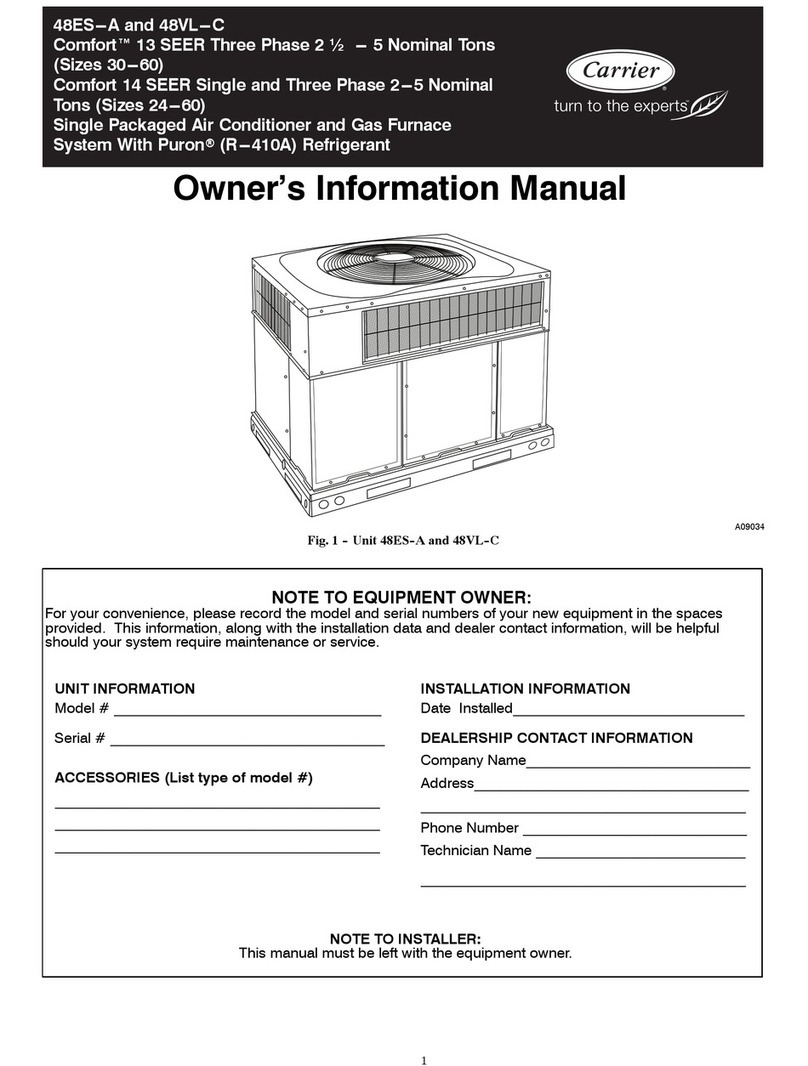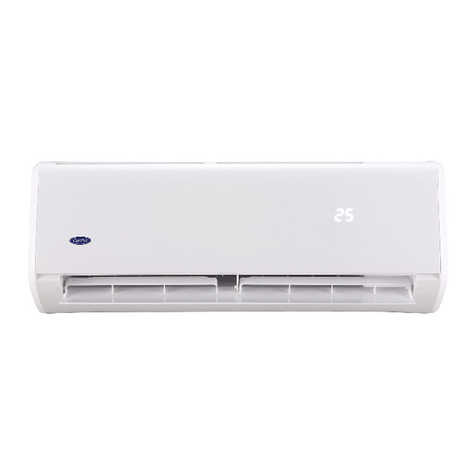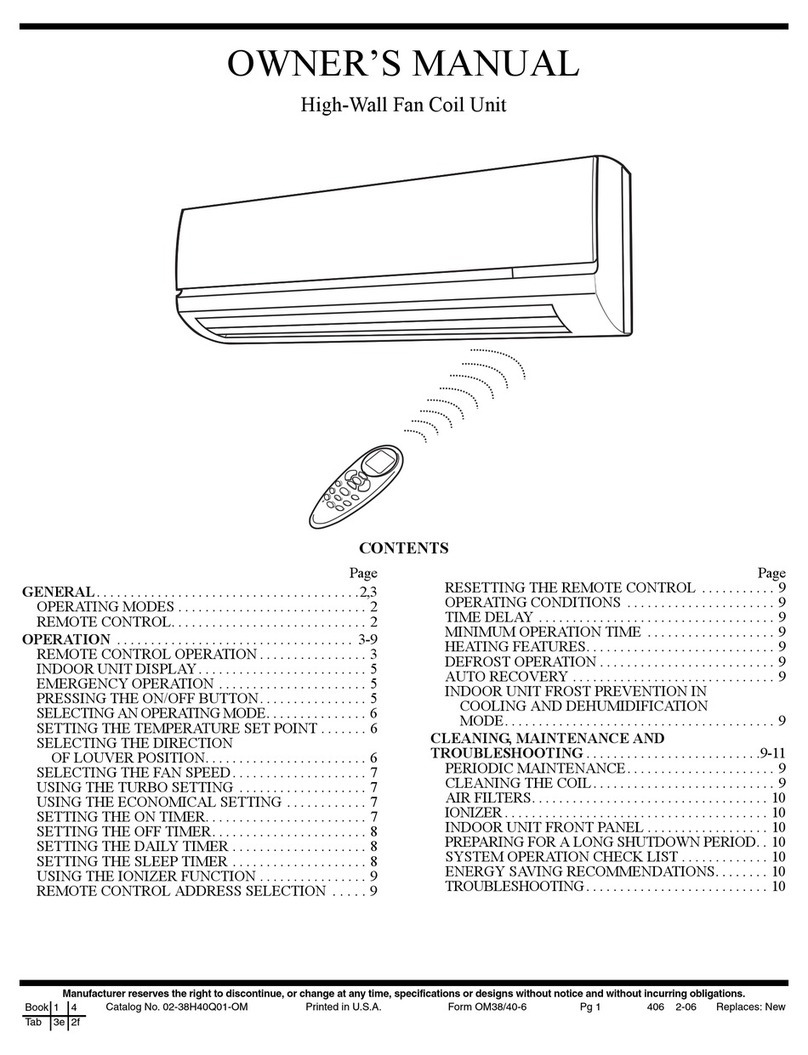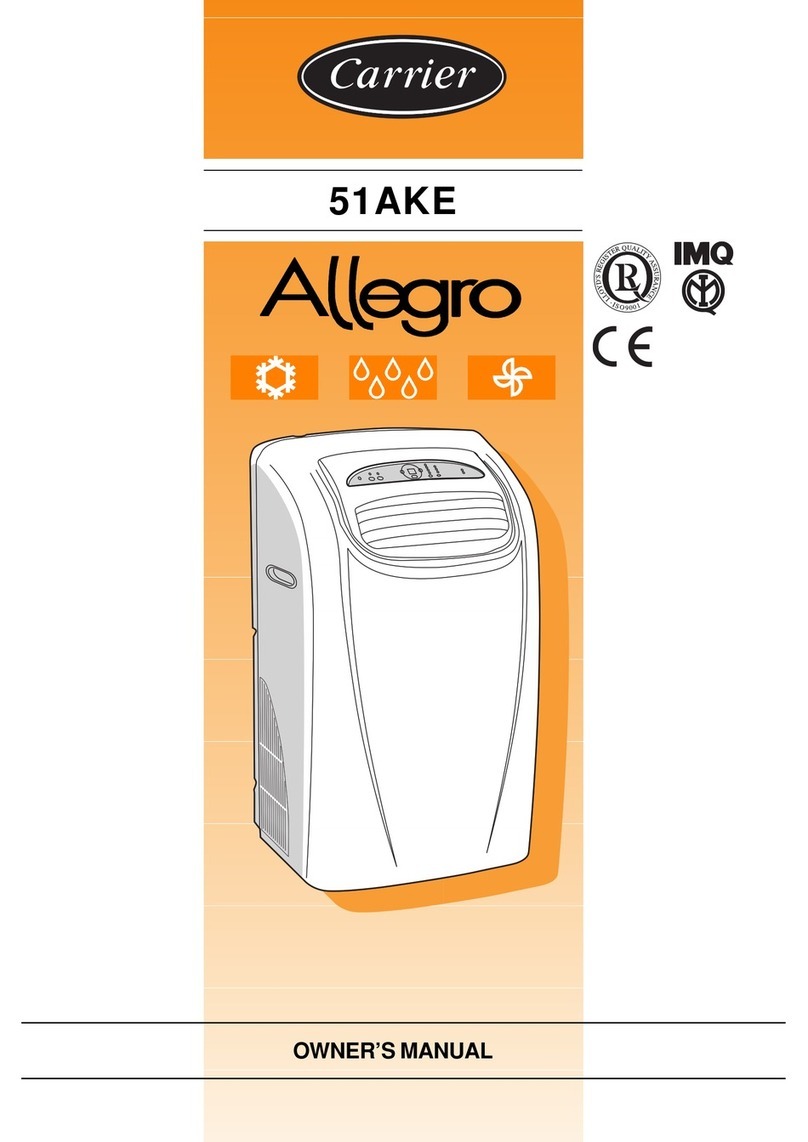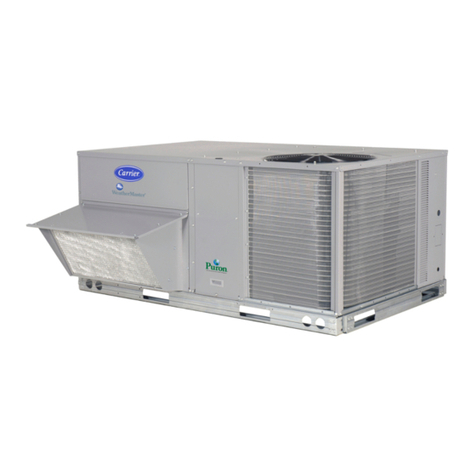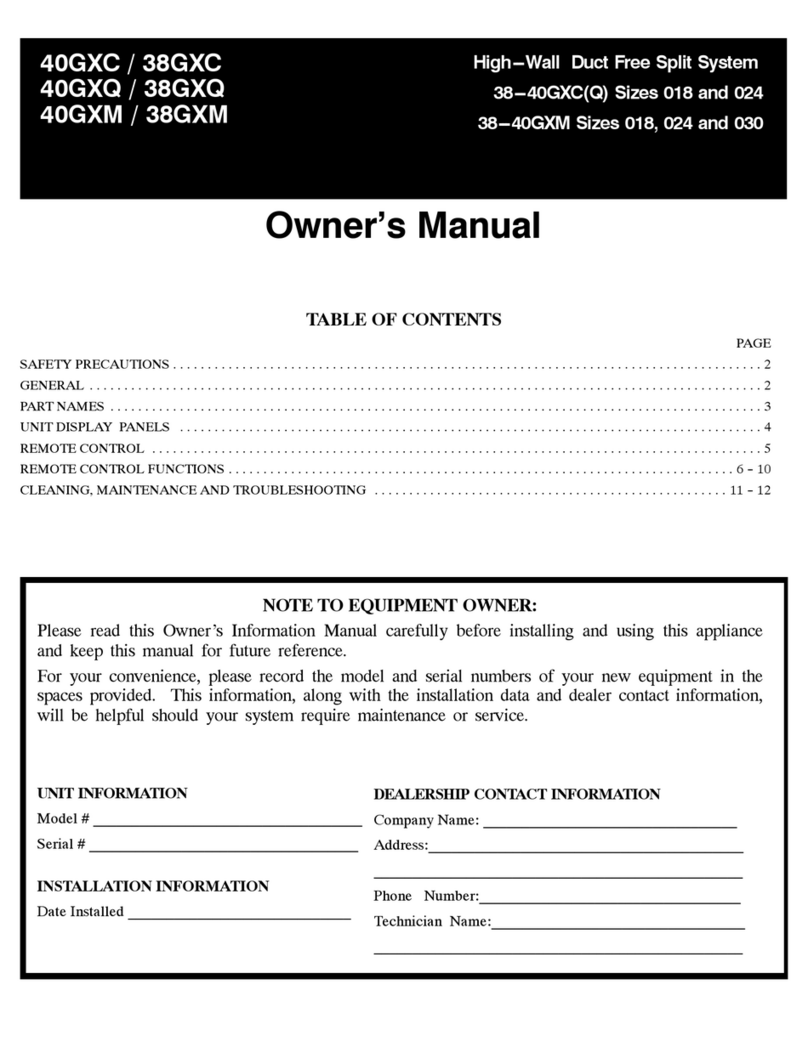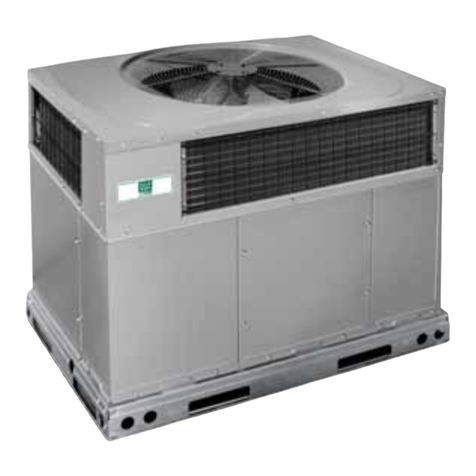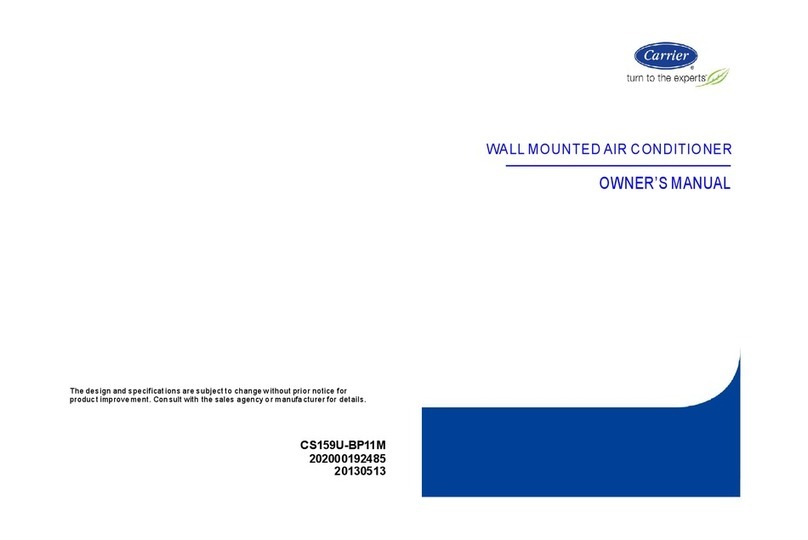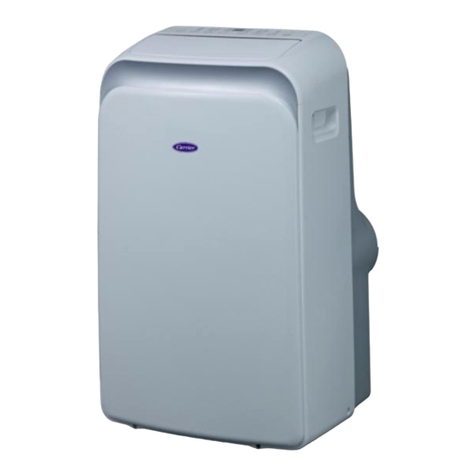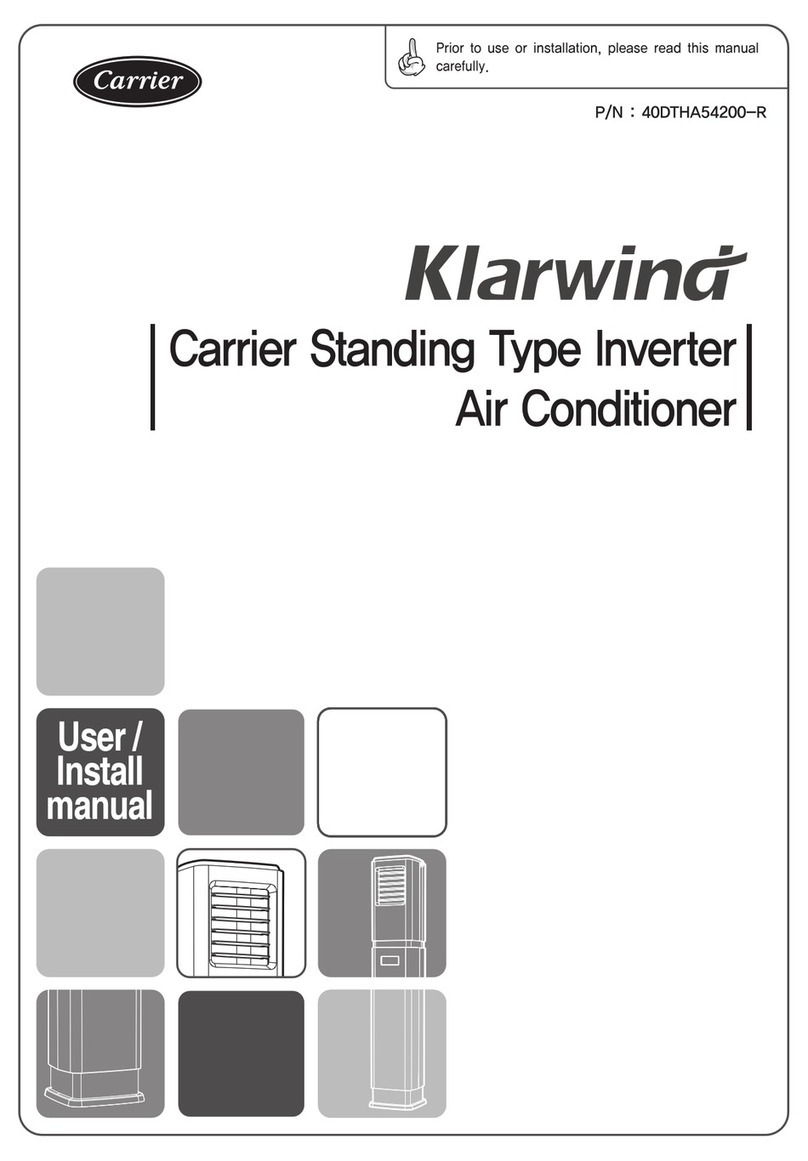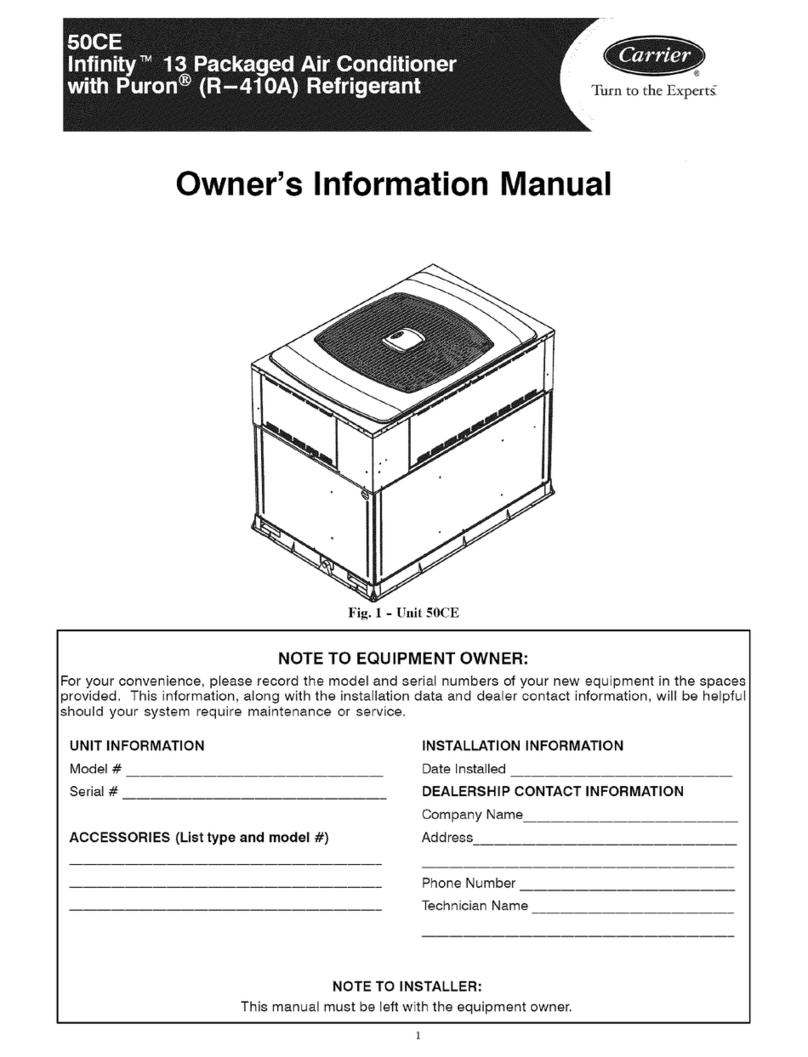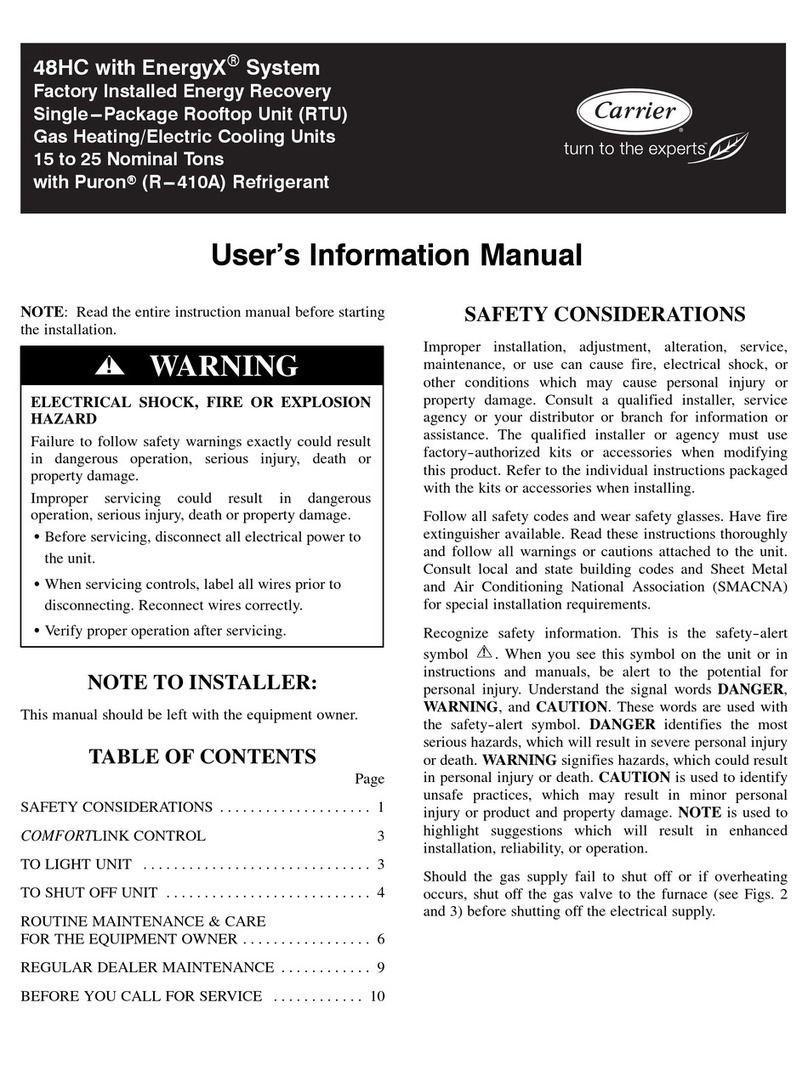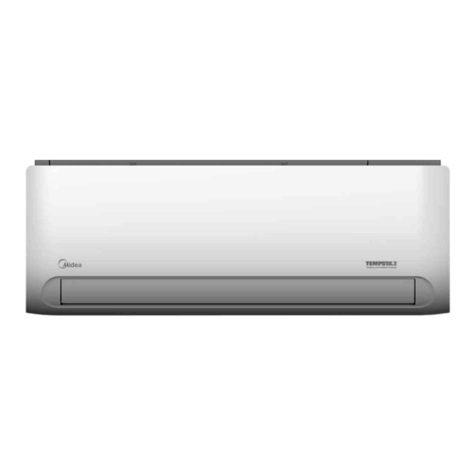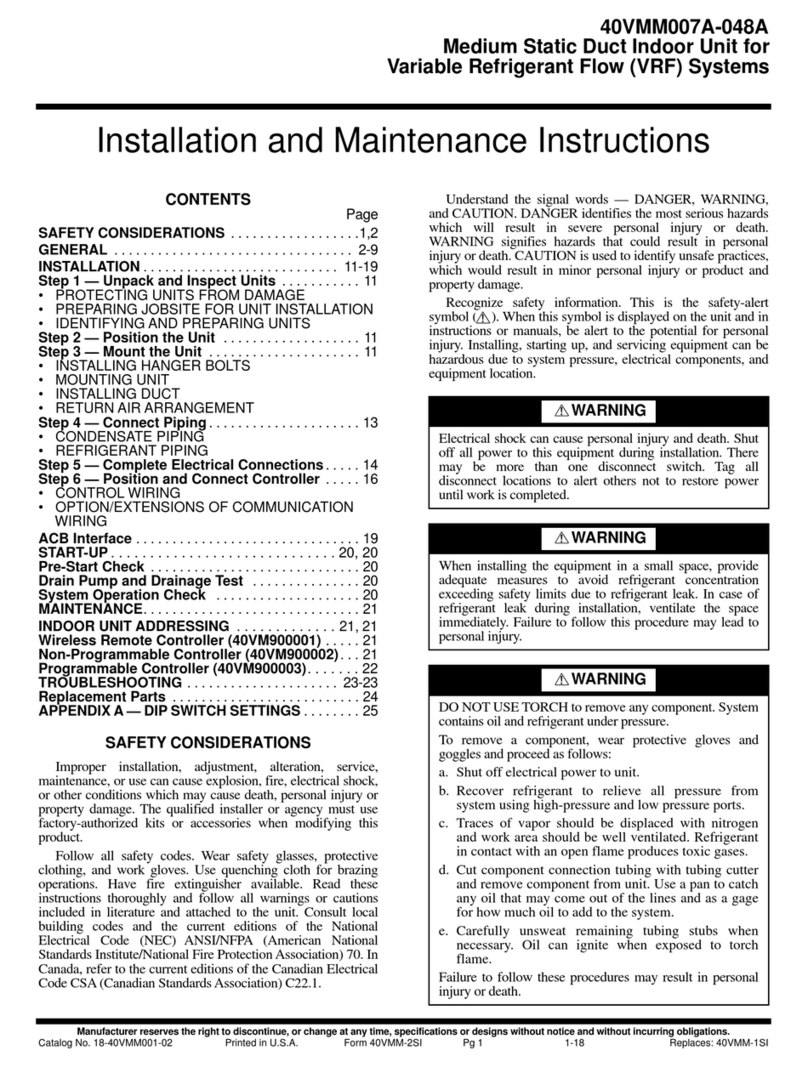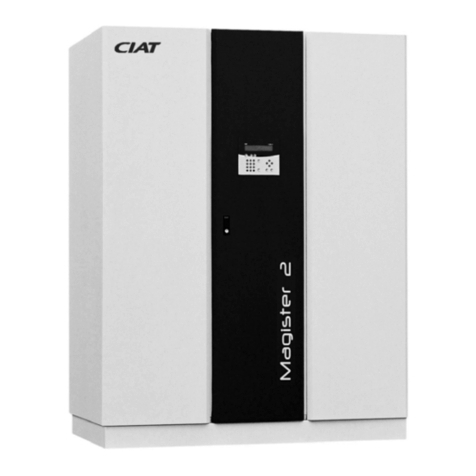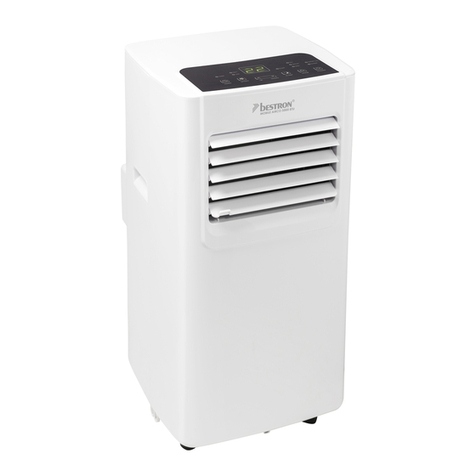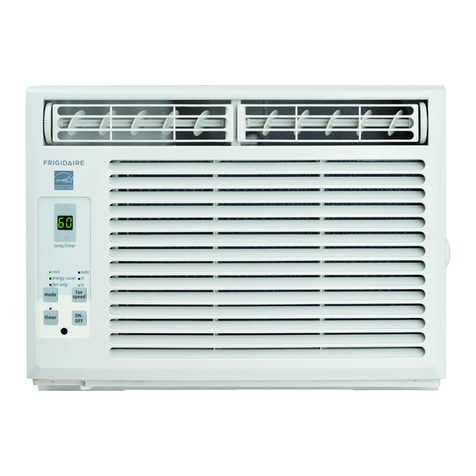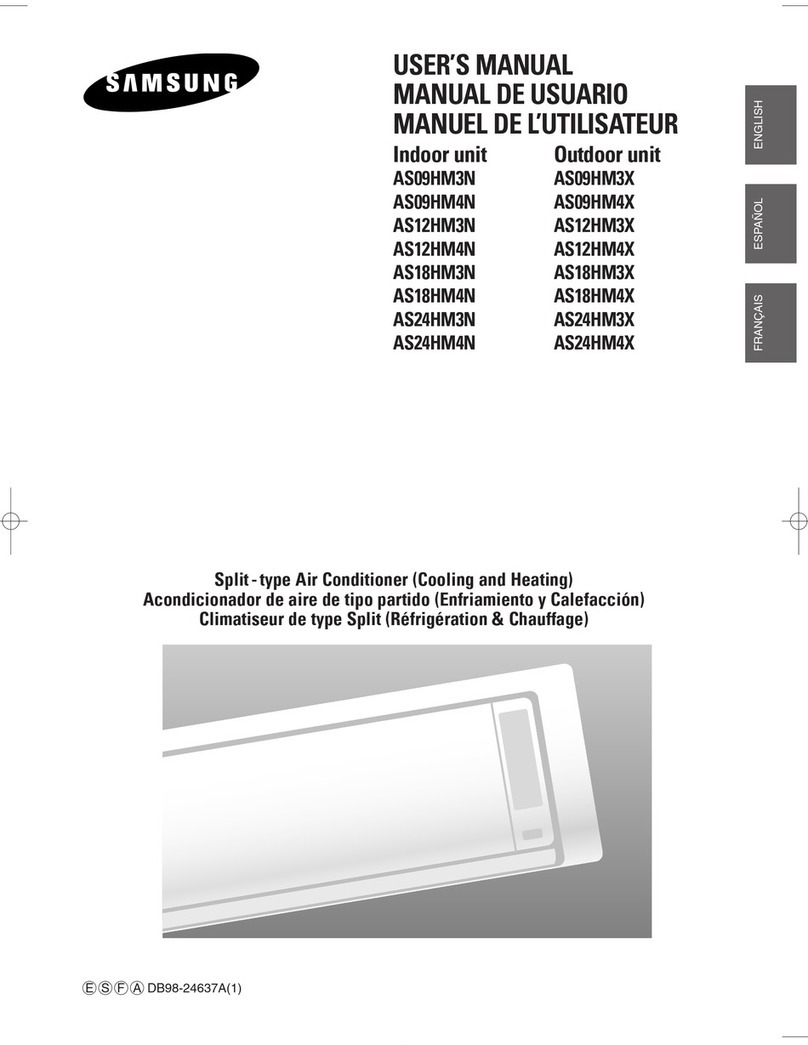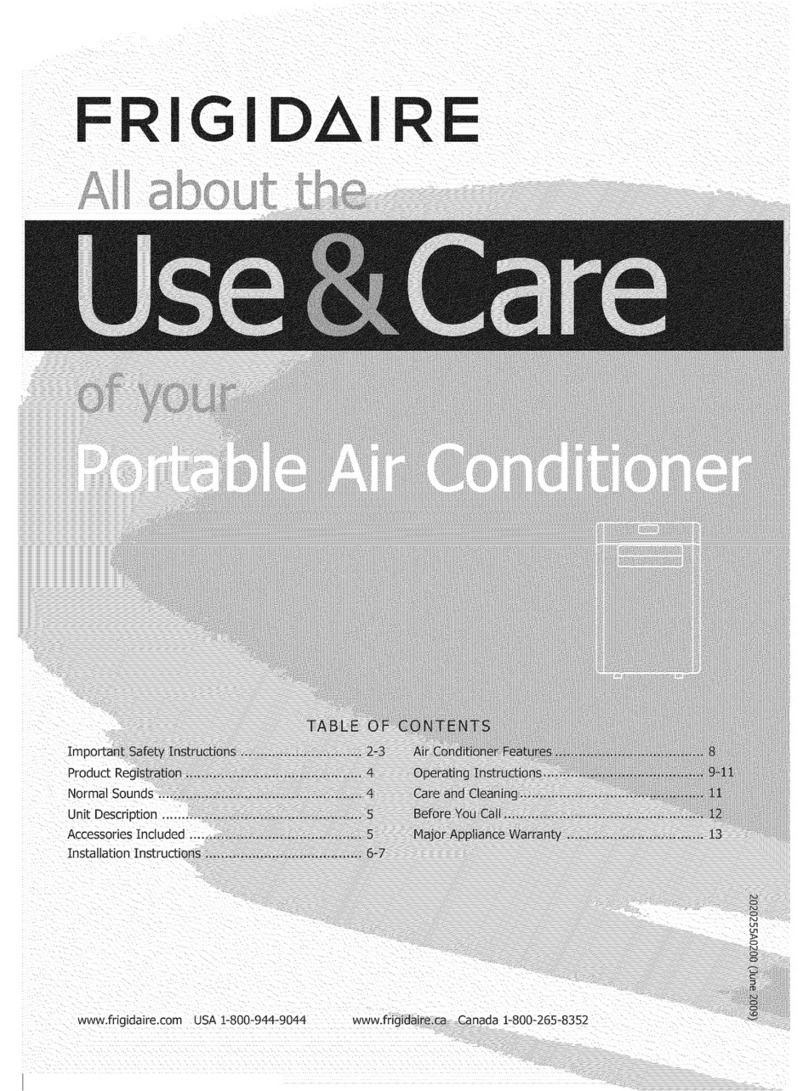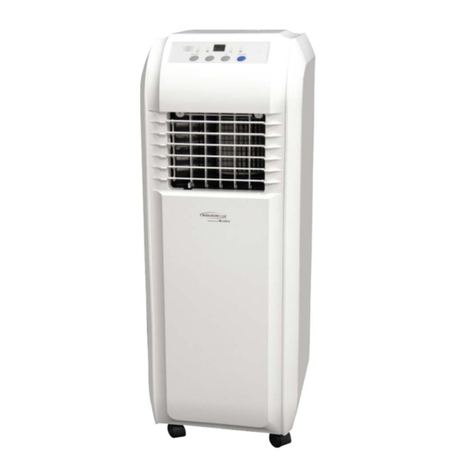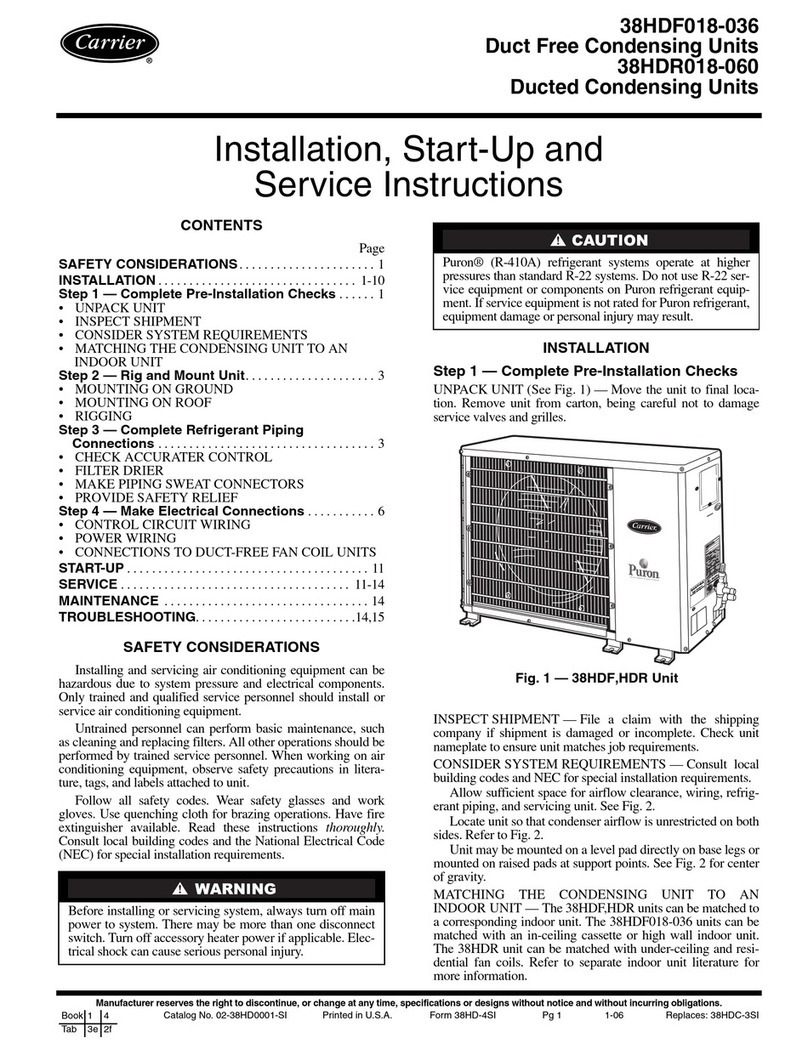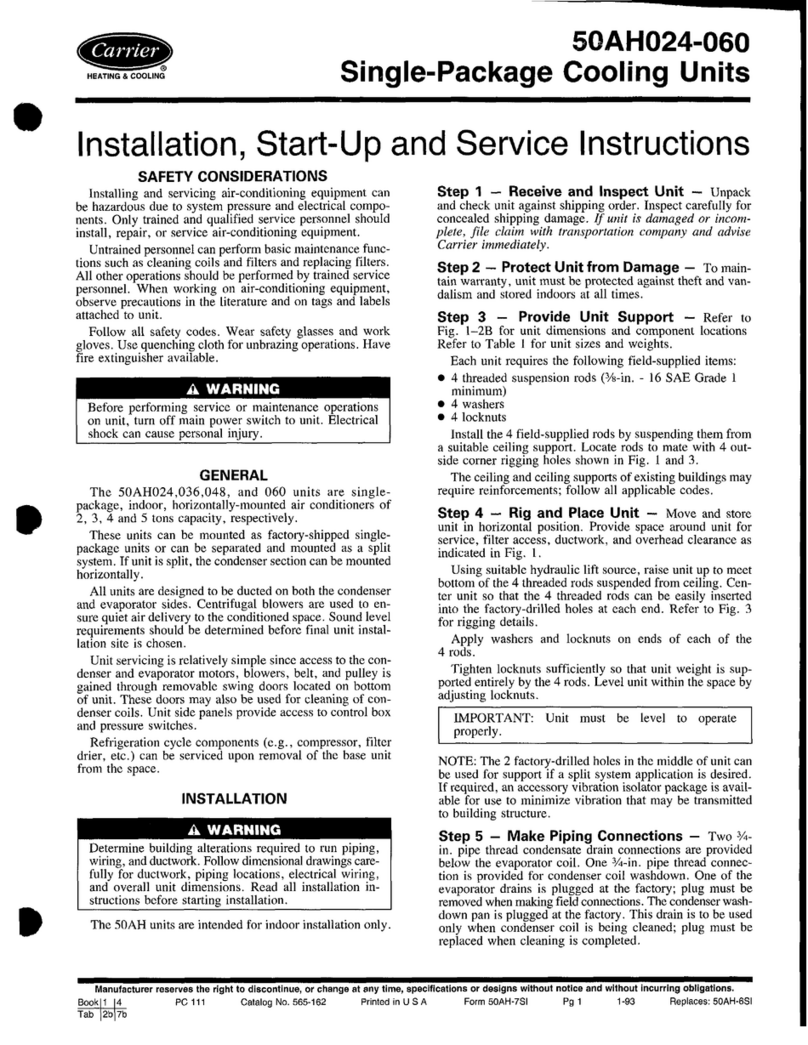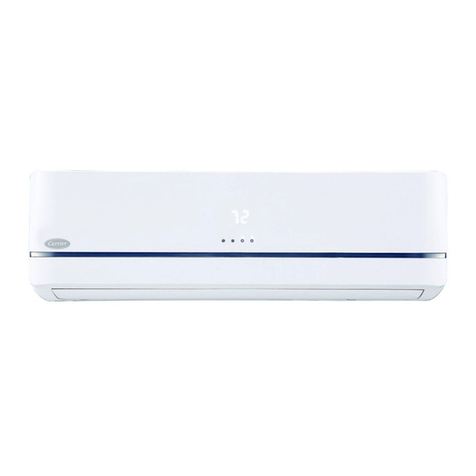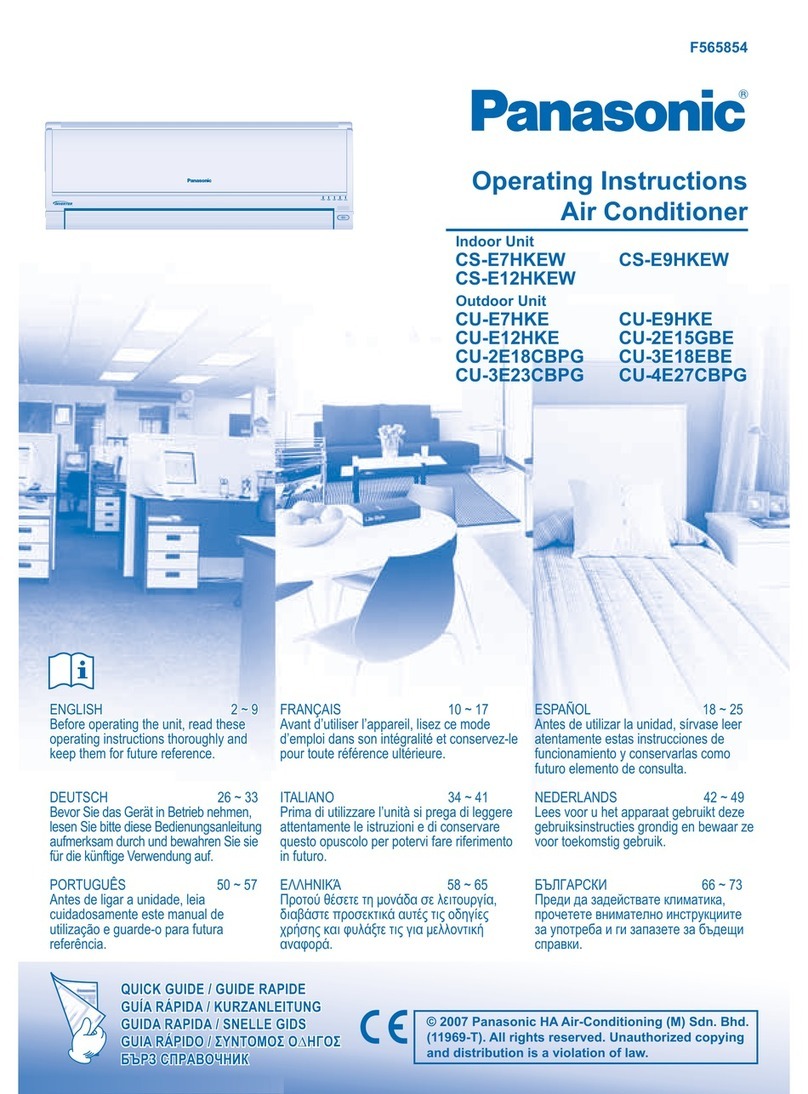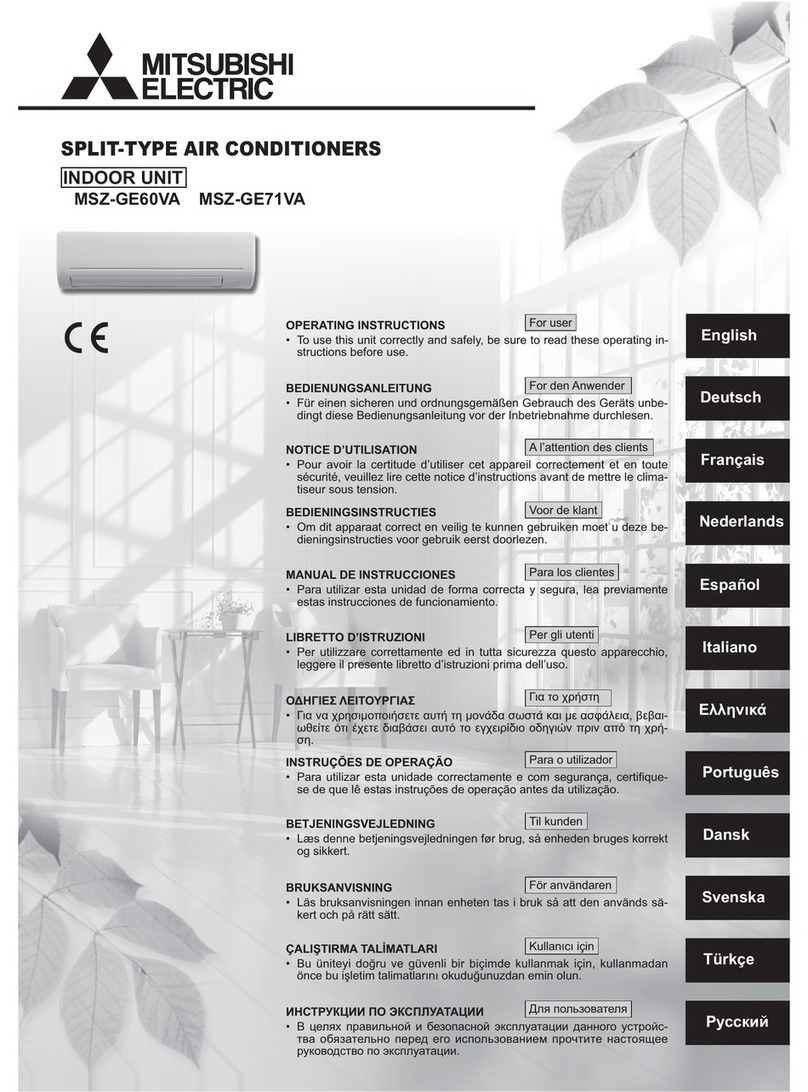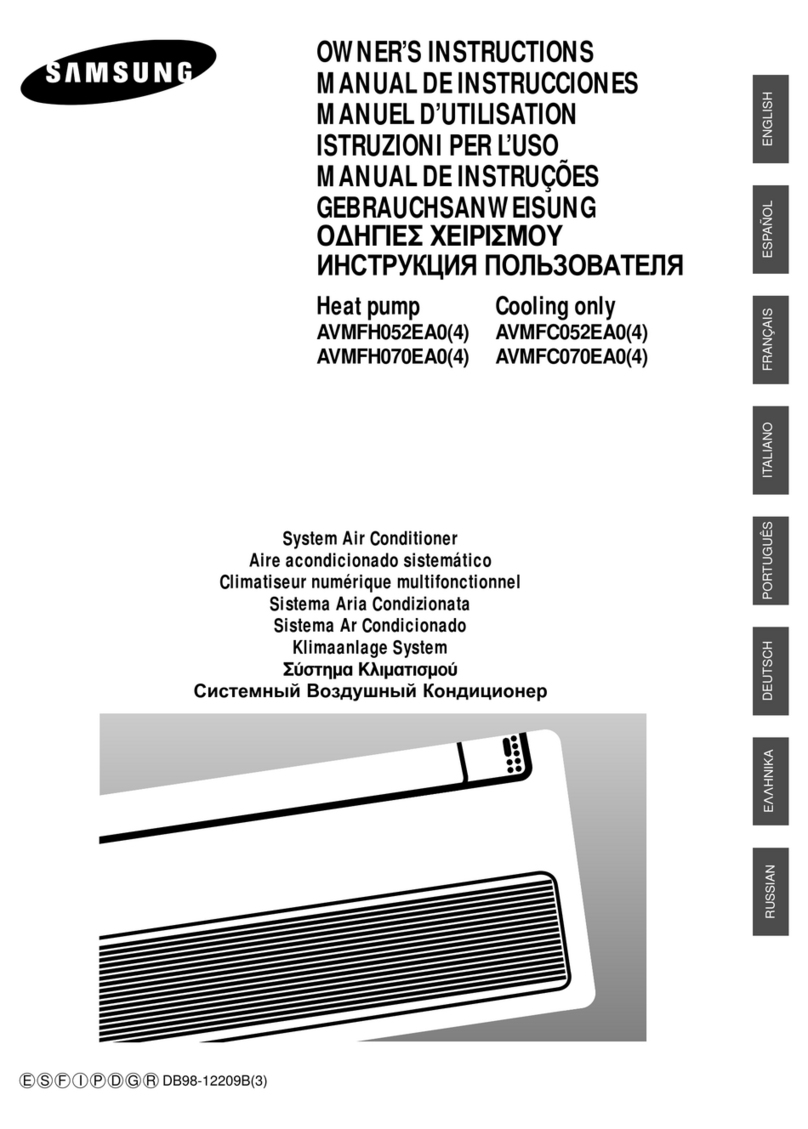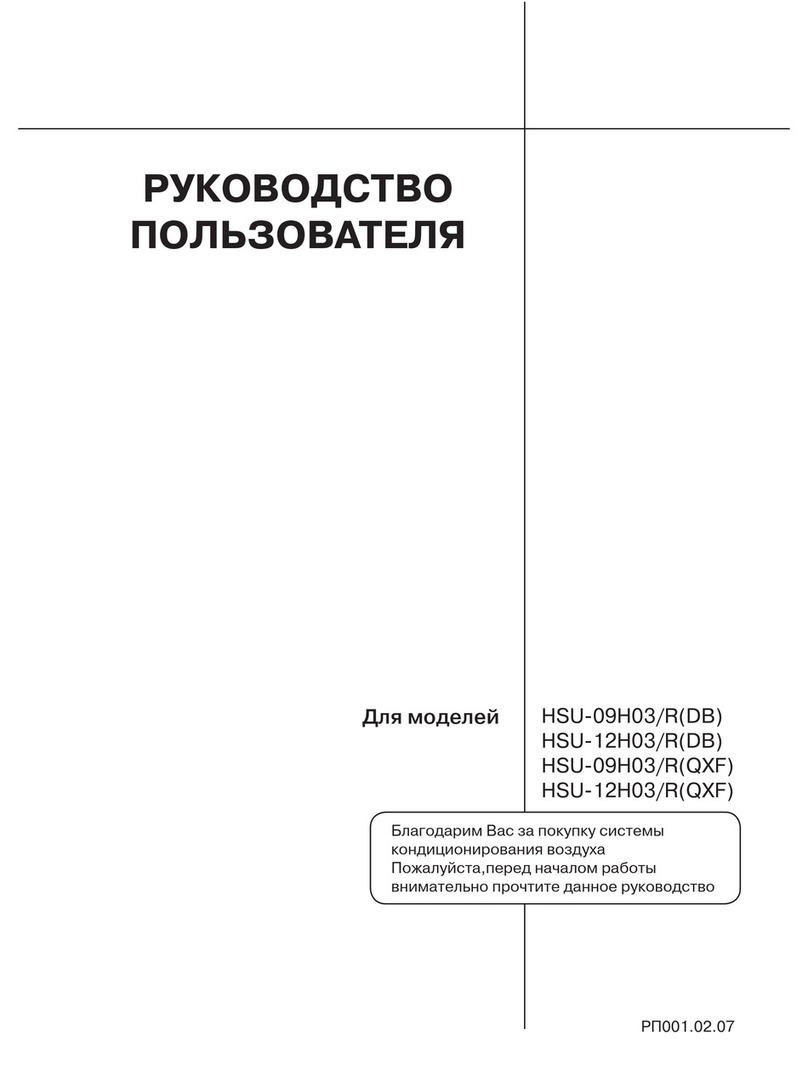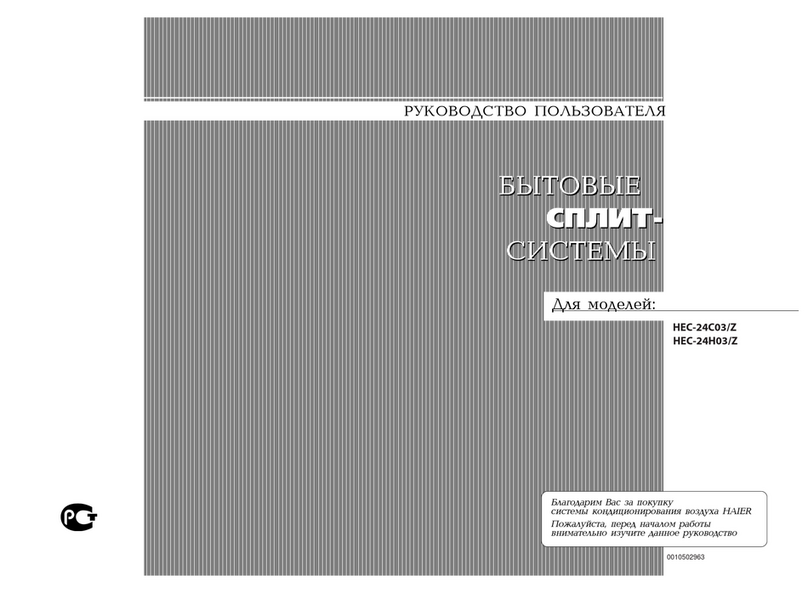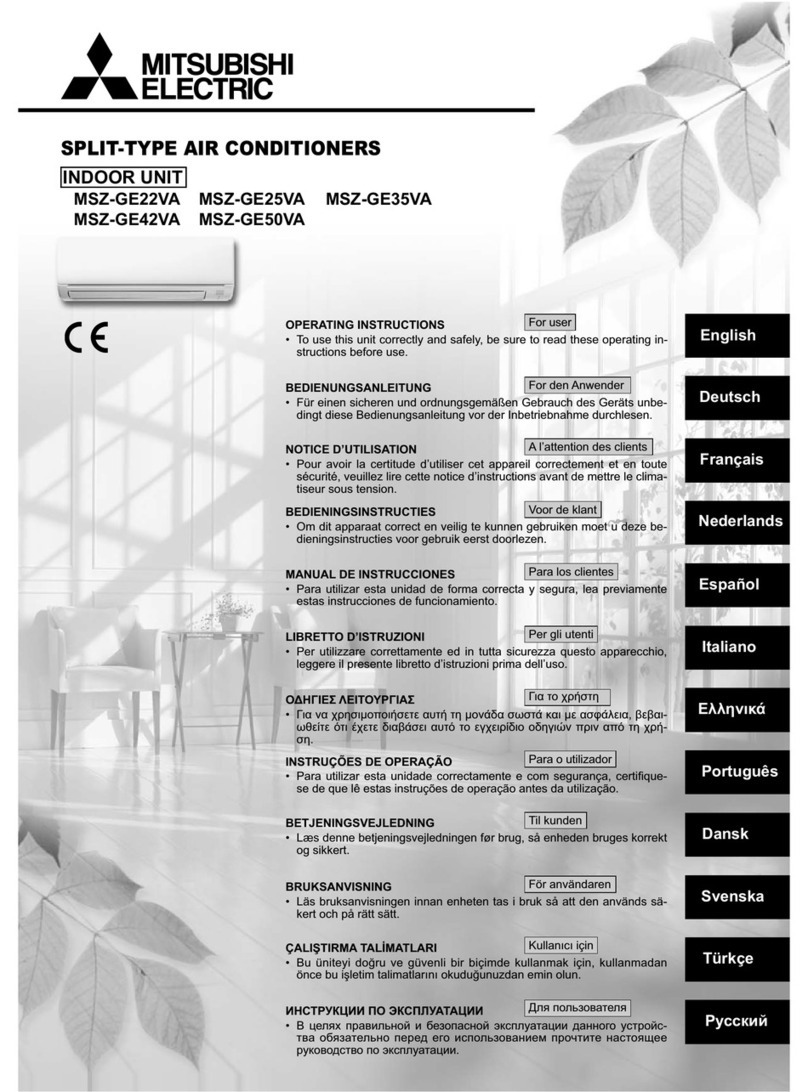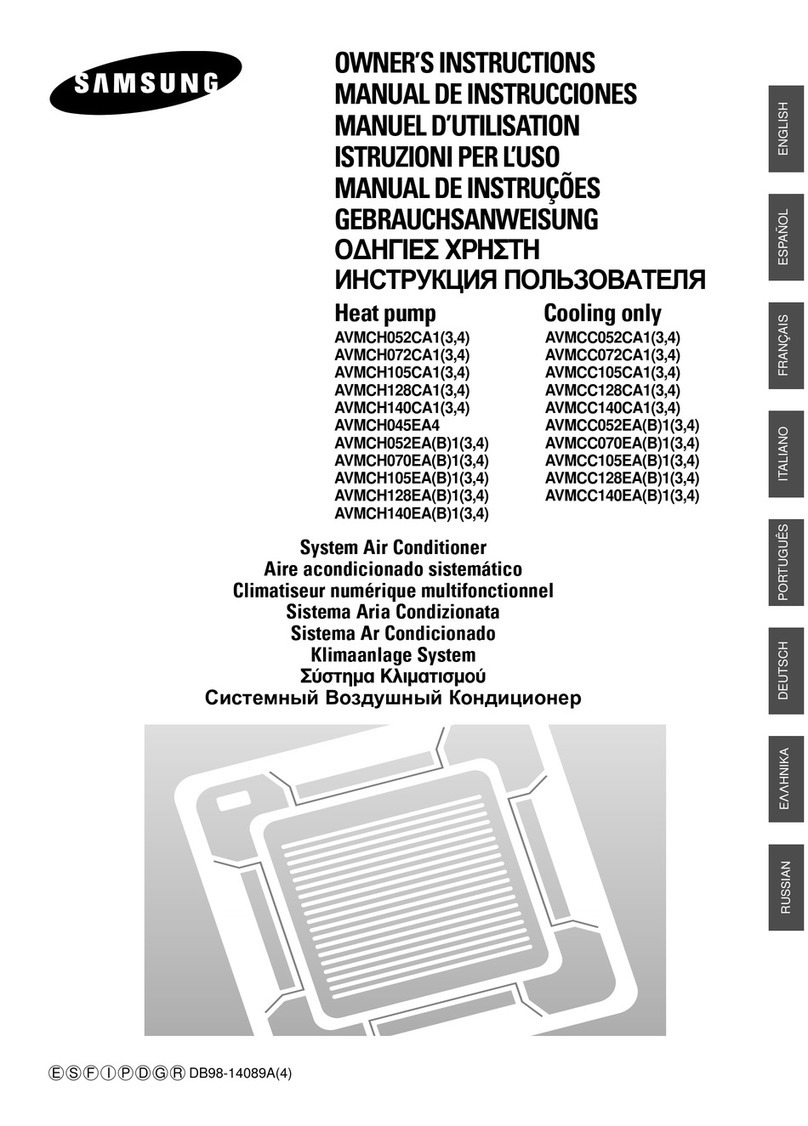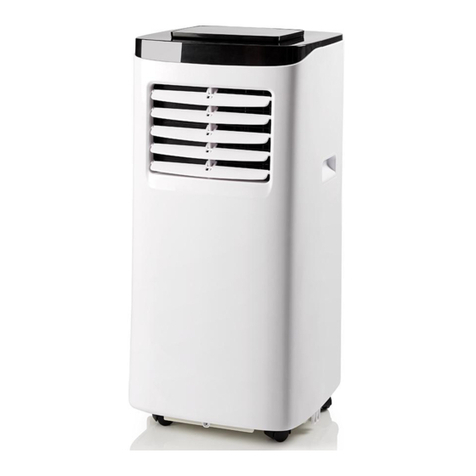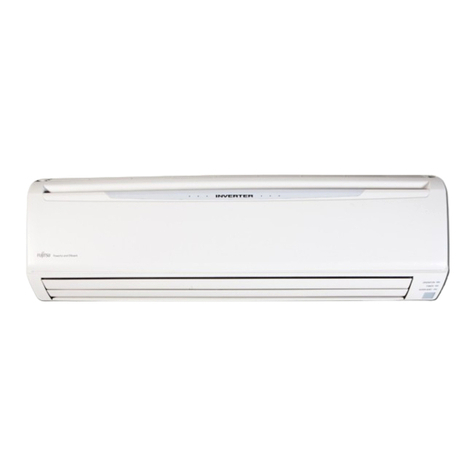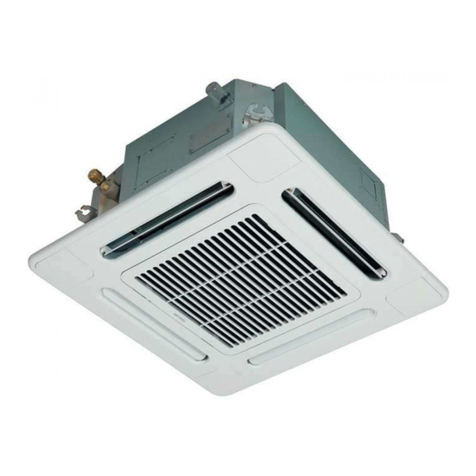
GENERAL
This book contains Start-Up, Controls Operation, Trouble-
shooting and Service information for the 48/50A Series
rooftop units. See Table 1. These units are equipped with
(_nfortLink TM controls.
Use this guide in conjunction with the separate installation
instructions packaged with the unit. Refer to the Wiring Dia-
grains literature for more detailed wiring information.
Table 1 -- A Series Product Line
UNIT
48AJ
48AK
48AW
48AY
48A2
48A3
48A4
48A5
50AJ
50AK
50AW
50AY
50A2
50A3
50A4
50A5
CV --
MCHX --
VAV --
APPLICATION
CV Unit with Gas Heat, Vertical Supply
VAV Units with Gas Heat, Vertical Supply
CV Unit with Gas Heat, Horizontal Supply
VAV Unit with Gas Heat, Horizontal Supply
CV Unit with Gas Heat, Vertical Supply with MCHX Coil
VAV Unit with Gas Heat, Vertical Supply with MCHX Coil
CV Unit with Gas Heat, Horizontal Supply with MCHX Coil
VAV Unit with Gas Heat, Horizontal Supply with MCHX Coil
CV Unit with Optional Electric Heat, Vertical Supply
VAV Unit with Optional Electric Heat, Vertical Supply
CV Unit with Optional Electric Heat, Horizontal Supply
VAV Unit with Optional Electric Heat, Horizontal Supply
CV Unit with Optional Electric Heat, Vertical Supply with MCHX
Coil
VAV Unit with Optional Electric Heat, Vertical Supply with MCHX
Coil
CV Unit with Optional Electric Heat, Horizontal Supply with
MCHX Coil
VAV Unit with Optional Electric Heat, Horizontal Supply with
MCHX Coil
LEGEND
Constant Volume
Microchannel Heat Exchanger
Variable Air Volume
The A Series units provide ventilation, cooling, and heating
(when equipped) in variable air volume (VAV), variable volume
and temperature (VVT(R)), and constant volume (CV) applica-
tions. The A Series units contain the factory-installed
(_mfortLink TM control system which provides full system
management. The main base board (MBB) stores hundreds of
unit configuration settings and 8 time of day schedules. The
MBB also performs self diagnostic tests at unit start-up, moni-
tors the operation of the unit, and provides alarms and alert in-
formation. The system also contains other optional boards that
are connected to the MBB through the Local Equipment Net-
work (LEN). Information on system operation and stares are
sent to the MBB processor by various sensors and optional
boards that are located at the unit. Access to the unit controls for
configuration, set point selection, schedule creation, and service
can be done through a unit-mounted scrolling marquee. Access
can also be done through the Carrier Comfort Network R>(CCN)
system using the ComfortVIEW rM software, the accessory
Navigator TM hand-held display, or the System Pilot TM interface.
The (_nfortLink system controls all aspects of the rooftop.
It controls the supply-fan motor, compressors, and economiz-
ers to maintain the proper temperature conditions. The controls
also cycle condenser fans to maintain suitable head pressure.
All VAV units are equipped with a standard VFD (variable fre-
quency drive) for supply fan speed control and supply duct
pressure control. The (_mfortLink controls adjust the speed of
the VFD based on a static pressure sensor input. In addition,
the (_mfortLink controls can raise or lower the building pres-
sure using multiple power exhaust fans controlled from econo-
mizer damper position or from a building pressure sensor. The
control safeties are continuously monitored to ensure safe oper-
ation under all conditions. Sensors include suction pressure
transducers, discharge pressure transducers, and saturated con-
densing temperature sensors which allow for display of opera-
tional pressures and saturation temperatures.
A scheduling function, prograimned by the user, controls
the unit occupied/unoccupied schedule. Up to 8 different
schedules can be progralmned.
The controls also allow the service person to operate a quick
test so that all the controlled components can be checked for
proper operation.
Conventions Used in This Manual EThe follow-
ing conventions for discussing configuration points for the lo-
cal display (scrolling marquee or Navigator accessory) will be
used in this manual.
Point names will be written with the Mode name first, then
any sub-modes, then the point name, each separated by an
arrow symbol (--->). Names will also be shown in bold and
italics. As an example, the IAQ Economizer Ovemde Position
which is located in the Configuration mode, Indoor Air Quality
Configuration sub-mode, and the Air Quality Set Points
sub-sub-mode, would be written as (bnfiguration--€
IAQ---_IAQ.SP-_IQ.O.P. A list of point names can be found in
Appendix A.
This path name will show the user how to navigate through
the local display to reach the desired configuration. The user
would scroll through the modes and submodes using the
[] and _--] keys. The arrow symbol in the path name repre-
sents pressing _ to move into the next level of the
menu structure.
When a value is included as part of the path name, it will be
shown at the end of the path name after an equals sign. If the
value represents a configuration setting, an explanation will be
shown in parentheses after the value. As an example, Configu-
ration--+IAQ---)AQ. CF--+IQ.AC =1(IAQ Analog Input).
Pressing the _ and _ keys simultaneously
at any thne will display an expanded text description of the four-
character point name. The expanded description is shown in the
local display tables (Appendix A).
The CCN point names are also referenced in the local
display tables for users configuring the unit with CCN software
instead of the local display. The CCN tables are located in
Appendix B of this manual.
BASIC CONTROL USAGE
ComfortLink Controls EThe (_mfortLink control
system is a comprehensive unit-management system. The con-
trol system is easy to access, configure, diagnose and trouble-
shoot.
The control is flexible, providing two types of constant
volume cooling control sequences, two variable air volume
cooling control sequences, and heating control sequences for
two-stage electric and gas systems, and for multiple-stage gas
heating, in both Occupied and Unoccupied schedule modes.
This control also manages:
• VAV duct pressure (through optional VFD), with reset
• Building pressure through two different power exhaust
schemes
• Condenser fan cycling for mild ambient head pressure
control
• Space ventilation control, in Occupied and Unoccupied
periods, using CO2 sensors or external signals, with ven-
tilation defined by damper position
• Smoke control functions
• Occupancy schedules
• Occupancy or start/stop sequences based on third party
signals
• Alarm status and history and run time data
• Management of a complete unit service test sequence
